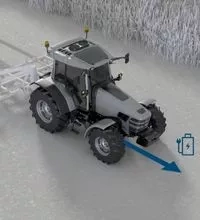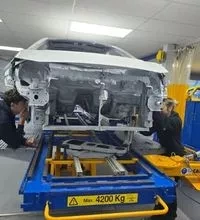How do we keep AVs safe on the road?

Founder of Reed Mobility Dr Nick Reed, has been working with BSI, the UK National Standards Body, to develop a new technique for assessing the performance of self-driving vehicles: Digital Commentary Driving (DCD).
Building on his research into public attitudes and expectations towards the ethical behaviours of automated vehicles (AVs), and complementing his role as Chief Road Safety Adviser to National Highways, DCD offers a practical solution, as he explains to MotorPro.
What is DCD and why do we need it?
When it comes to important decisions, gut feel and belief are not enough; objective evidence in the form of data is necessary. Our 2022/23 research, funded by the Rees Jeffreys Road Fund, identified that trust was the most important value to the public in their appreciation of AVs.
We also found that this trust is encapsulated by four key attributes. AVs should: 1) Be governed by a clear legal framework; 2) Be at least as safe as a good human driver; 3) Protect other road users at least as well as they protect their occupants; and 4) Share data with stakeholders to improve safety.
These principles are enshrined in the Automated Vehicles Act 2024, but what will be the data that enables us to trust that they will be safe? My work with colleagues from BSI looked at the ways that we assess the safety of advanced human drivers, and the metrics used to assess the safe performance of mobile robots. Bridging these worlds, we proposed the concept of DCD.
How does it work?
DCD is a standardised protocol requiring the collection of data that an AV must be using in order to drive safely. This includes the current status of the vehicle – speed, steering angle, brake and accelerator application, software version etc – perception of the surrounding environment, both fixed and moving objects, and predictions of their future movements.
Since DCD data covers the essential features necessary for careful and competent driving, it cannot compromise commercially sensitive information about the way a vehicle is being controlled. There is no presumption over how this data is arrived at. DCD does not prescribe the hardware – cameras, lidar, radar, ultrasound, V2X etc – or the software, deep learning or rules-based. It only requires the sharing of standardised data regarding the perceptions, decisions and actions.
Furthermore, AV companies would only be required to share data on the performance of their vehicles with an authorised regulator who would hold it securely for analysis pursuant to safety performance.
How does DCD help to uphold both the spirit and letter of the AV Act?
The Act provides two key principles: a) authorised automated vehicles will achieve a level of safety equivalent to, or higher than, that of careful and competent human drivers; and b) road safety in Great Britain will be better as a result of the use of authorised automated vehicles on roads than it would otherwise be.
Principle (a) is challenging because there is no agreed definition of careful and competent driving, although the DVSA’s National Standards for Driving are a good start. For principle (b), the answer appears more straightforward. We could look at the collision rates of AVs and compare that to collision rates for human drivers in similar vehicles on similar journeys.
If AVs achieve a lower crash rate, we can say that road safety is better. However, there are nuances here too. An AV service might attract customers who previously completed a similar journey by train. Rail travel is estimated to be 20× safer than human driving, so shifting to AVs might increase the global risk.
The collection of DCD data does not, in itself, tell us what it means for an AV to be a careful and competent driver. However, it does start to provide a consistent dataset that will enable objective analysis – benchmarks that set expectations around what it means to drive safely.




